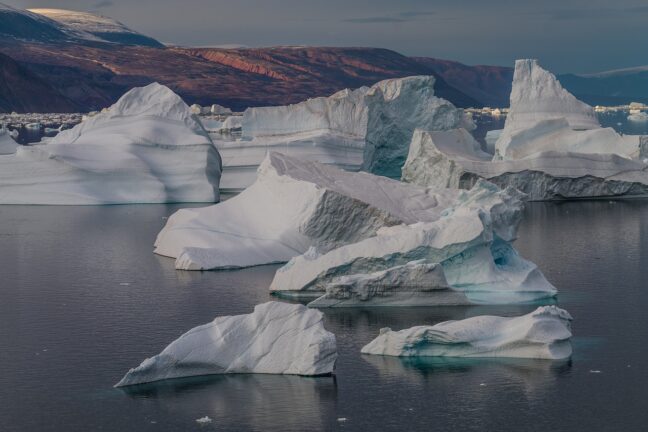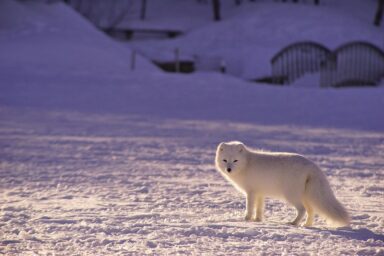Finland and Sweden’s NATO accession puts seven of the eight Arctic states inside the alliance. Moscow calls that “hostile encirclement”, Brussels calls it overdue. Meanwhile, security is just one of the factors at play.
Russian cruise-missile drills over the Barents Sea no longer surprise Arctic watchers. Moscow spends billions on ice-hardened bases while its army bleeds in Ukraine. The European Union, once content to see the High North as a scientific curiosity, now sees a geostrategic chessboard.
Yet ships and submarines tell only half the story; economics matter just as much as missiles. As Katja Bego, a Chatham House researcher observed in a comment last Friday, “Presence equals sovereignty. If Europe wants sway in the Arctic, it must plant more than flags.“
The task is urgent. China finances research stations and satellite dishes on frozen tundra while Russia courts Beijing to bankroll the Northern Sea Route. The European Union frets but hesitates.
You might be interested
Arctic economics
Sweden offers an antidote. “The EU’s self-sufficiency and independence from Russia and China will begin in the Arctic mine,” declared Ebba Busch last year, Sweden’s vice-PM, while showing Ursula von der Leyen the iron-rich hills of Kiruna. Europe needs those ores and rare earths for its green transition. Projects crawl forward, slowed by high costs and harder questions about Sami land rights. Delay, warns Ms Bego, rewards actors “with fewer scruples”.
China fills the vacuum. It styles itself a near-Arctic power—although Harbin sits no closer to the pole than Venice—and bankrolls dual-use kit that can map seabeds or snoop on submarines. Brussels has begun screening Chinese investments, but funding still trickles north via joint “research” ventures.
Shipping is the next fight. “Europe must use this leverage and not allow Russia to develop the NSR on its (and Beijing’s) terms,” Ms Bego insists. Only about 90 vessels braved the Northern Sea Route last year, versus 13,000 through Suez. But melting ice shortens Asia-Europe transits by up to half. Russia wants tolls and mandatory pilots; China wants a polar branch of its Belt and Road Initiative. Europe, as has become usual, wants rules.
Dual-use dilemmas
Brussels, to be sure, is not entirely idle. It backs a plan for the first trans-Arctic data cable to link Europe, North America and East Asia. The fibre would cut latency by 40 per cent and feed NATO radars. But it would also tempt saboteurs; and dual-use dilemmas stack up.
Security analysts see more. The Centre for European Policy Analysis notes that “The ‘High North, low tension’ and ‘exceptional Arctic’ mantras are increasingly outdated.” Russian aircraft probe Nordic airspace. Jammers scramble GPS near Norway’s Finnmark. Undersea drones circle pipelines. CEPA warns: “A predictable and transparent military security framework, including an Arctic Military Code of Conduct, is urgently needed.”
Europe must use its leverage and not allow Russia to develop the North Silk Road on its and Beijing’s terms. — Katja Bego, senior research fellow at Chatham House
NATO’s Arctic seven—Canada, Denmark, Finland, Iceland, Norway, Sweden and the United States—agree in principle. In practice they juggle clashing doctrines, kit shortages and overlapping commands. Uncrewed sensors, polar satellites and ice-class patrol ships all cost money. European treasuries groan.
How much NATO?
Too little presence invites adventurism; too much risks panic in Moscow. CEPA cautions that “Too much NATO would essentially strengthen Moscow’s ‘besieged fortress’ mentality.” Brussels must therefore calibrate. Joint Force Command Norfolk now coordinates Atlantic and Arctic navies. A new land corridor lets Finnish, Swedish and Norwegian brigades shuttle supplies across tundra. The European Commission finances roads and rail to seal the link.
Integration helps, but Europeans still lack cold-weather kit and spare parts. Recent exercises exposed frozen hydraulics and balky diesel heaters. The EU’s defence-industrial strategy nods to polar needs; funding lags behind.
A predictable and transparent military security framework, including an Arctic Military Code of Conduct, is urgently needed. — Centre for European Policy Analysis policy recommendation
A coherent EU Arctic policy must knit economics and security. First, bankroll critical minerals at home, not just in Australia or Africa. Environmental safeguards can coexist with faster permits. Second, demand that any vessel on the Northern Sea Route carry European-certified transponders and insurance, or face sanctions in EU ports. Third, speed the Arctic cable and pair it with seabed sensors to spot tampering.
Policy, not platitudes
Last, push for that military code of conduct, even if Russia stonewalls. The process would expose bad behaviour and rally allies. It would also remind Beijing that its “tactical retreat” from Arctic swagger, noted by CEPA, does not exempt it from rules.
The Arctic is warming twice as fast as the planet, and politics follow suit, heating just as quickly. Minerals, shipping lanes and data cables may yet shape Europe’s strategic autonomy more than any tank on the Ukrainian steppe. Brussels still has time to act, but, as it were, the ice is thinning.





